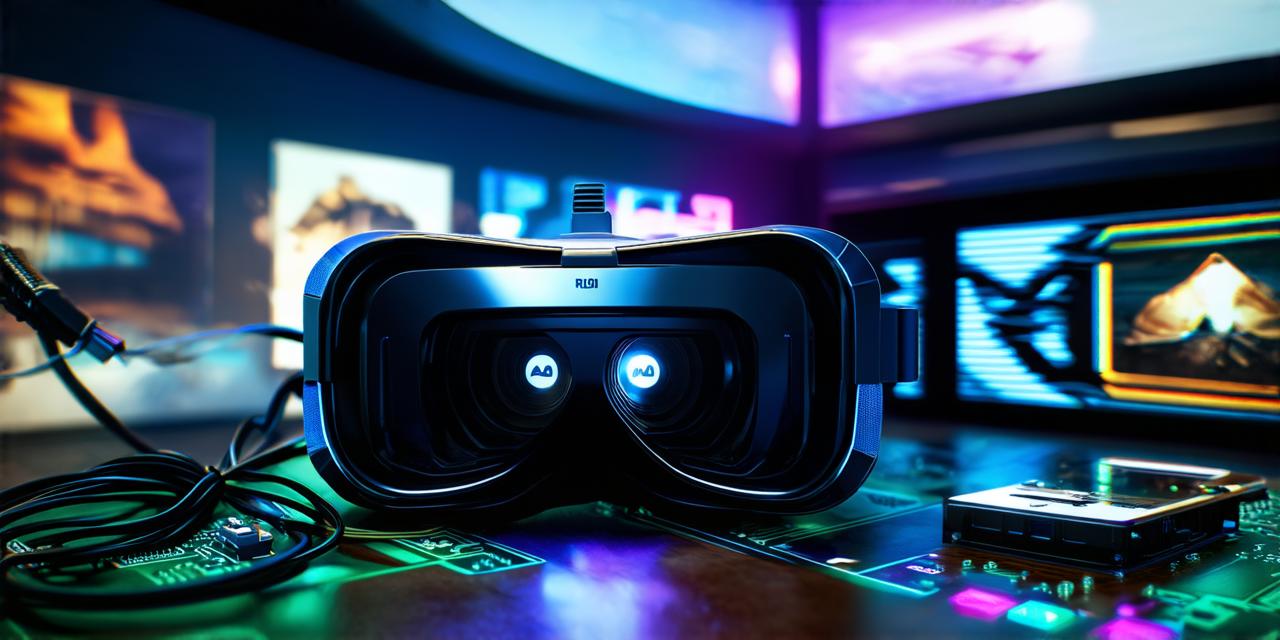The rise of virtual reality (VR) technology has opened up new possibilities for content creation and consumption. With VR headsets, users can experience immersive environments and interact with virtual objects in ways that were previously impossible. In this article, we will explore the different types of content that are accessible through VR headsets and how they are being used by developers.
Virtual Reality Headsets: A Brief Overview
Virtual reality headsets are devices that allow users to experience a 3D digital environment in real-time. They consist of a headset with screens, sensors, and tracking technology that track the user’s movements and adjust the virtual environment accordingly. There are several types of VR headsets available, including standalone headsets, mobile headsets, and PC-based headsets.
Types of Content Accessible Through VR Headsets
1. Gaming
Virtual reality gaming has become increasingly popular in recent years, with many major game developers releasing VR-exclusive games. These games allow users to fully immerse themselves in the game world and interact with virtual objects in ways that were previously impossible. For example, in “Beat Saber” users can use their hands as light sabers to slash through blocks representing music beats, while in “Job Simulator” users can experience a simulated workplace environment.
2. Education and Training
Virtual reality is being used increasingly for education and training purposes. By allowing users to experience simulations of real-world situations, VR can provide a safe and controlled environment for learning and practicing new skills. For example, medical students can use VR to practice surgeries, while military personnel can use VR to simulate battlefield scenarios.
3. Travel and Tourism
Virtual reality can transport users to different parts of the world without ever leaving their homes. This is particularly useful for people who cannot afford to travel or have mobility issues. For example, users can take a virtual tour of the Great Barrier Reef or explore ancient ruins in Egypt.
4. Real Estate and Design
Virtual reality can be used to showcase real estate properties and allow buyers to experience them in a more immersive way. Additionally, architects and designers can use VR to create detailed 3D models of buildings and structures, allowing clients to see the final product before it’s even built.
5. Entertainment and Experiences
Virtual reality can also be used for entertainment and experiences, such as virtual concerts and sporting events. For example, users can experience a live concert in a virtual arena or watch a football game from the sidelines.
6. Art and Creativity
Virtual reality has also found a place in the art world, allowing artists to create immersive installations and experiences. For example, artist Rafael Lozano-Hemmer’s “Pulse Room” uses VR to create an interactive installation that responds to the user’s heart rate, creating a unique and personalized experience.
Case Studies of Successful VR Content
1. The Virtual Reality Museum of Art (VRMA)
The VRMA is an online museum that showcases virtual artworks from around the world. By allowing users to experience these works in a 3D environment, the VRMA provides a unique and immersive way to appreciate art.
2. Google Expeditions
Google Expeditions is a VR-based learning platform that allows students to take virtual field trips to different parts of the world. By experiencing these trips in a safe and controlled environment, students can learn about different cultures and environments without ever leaving their classrooms.
3. The Anatomist’s Virtual Table
The Anatomist’s Virtual Table is an educational tool that allows users to explore human anatomy in a 3D virtual environment. By allowing students to interact with virtual models of the body, the tool provides a more engaging and memorable learning experience.
Expert Opinions on VR Content
“Virtual reality has the potential to revolutionize the way we consume content across a wide range of industries,” says Dr. Richard H. Tanenbaum, Professor of Computer Science at New York University. “From gaming to education, virtual reality can provide immersive and interactive experiences that were previously impossible.”
“The use of virtual reality in education is still in its early stages, but it has the potential to transform the way we teach and learn,” says Dr. Vicki Davis, a leading expert on technology in education.
